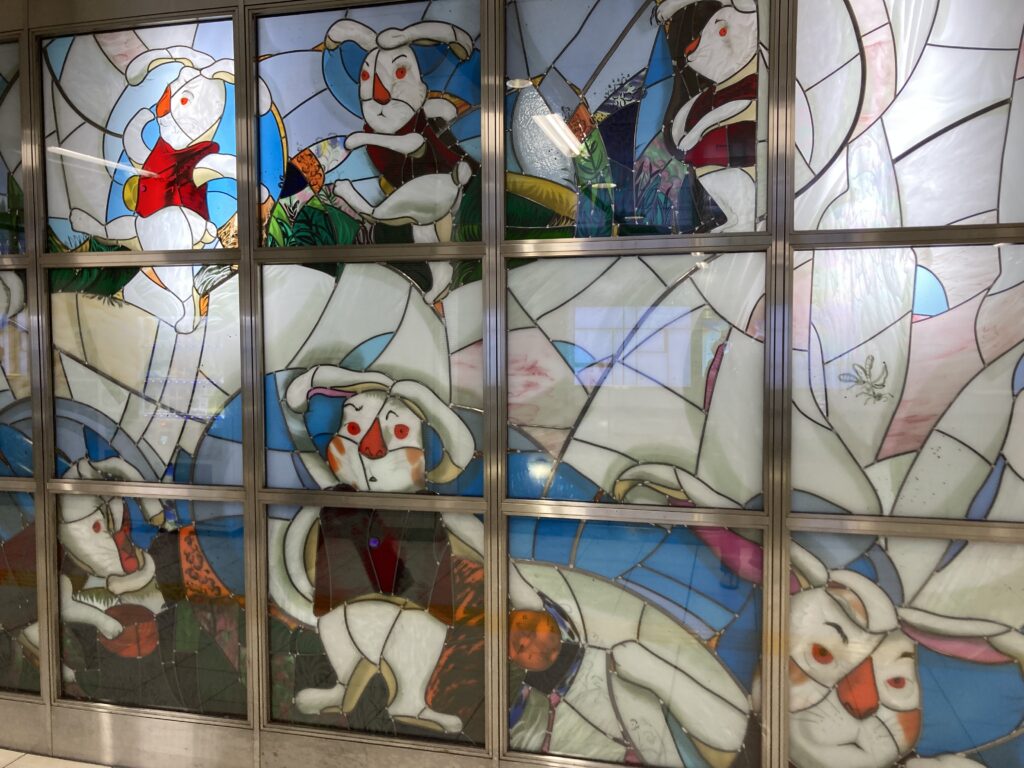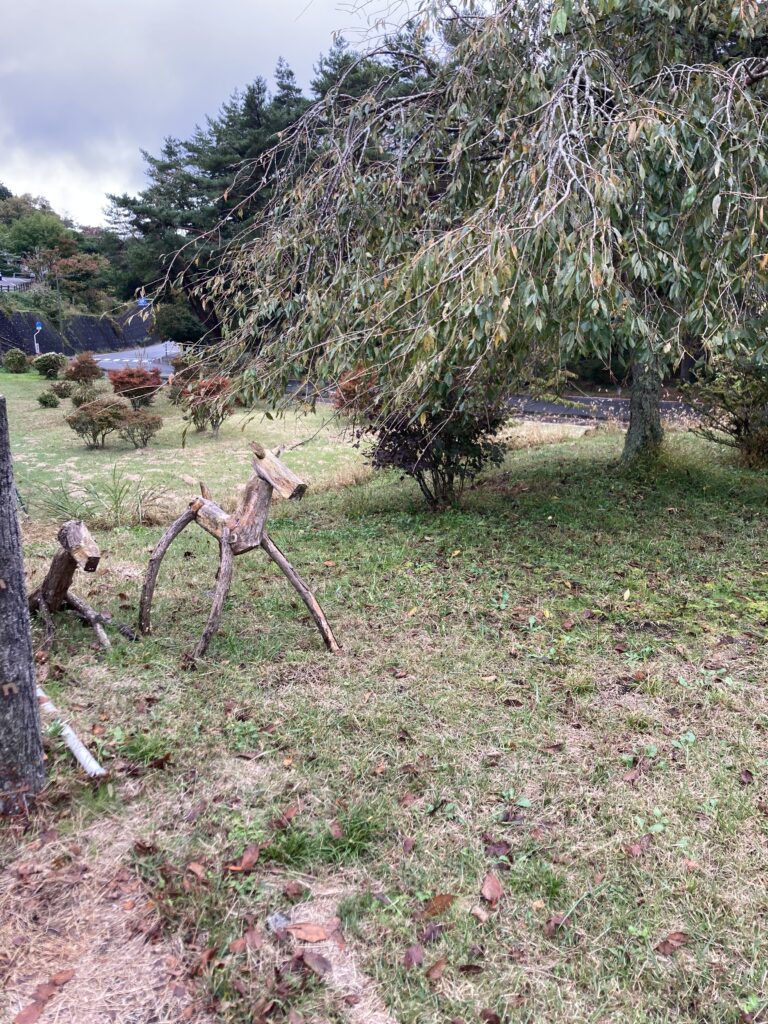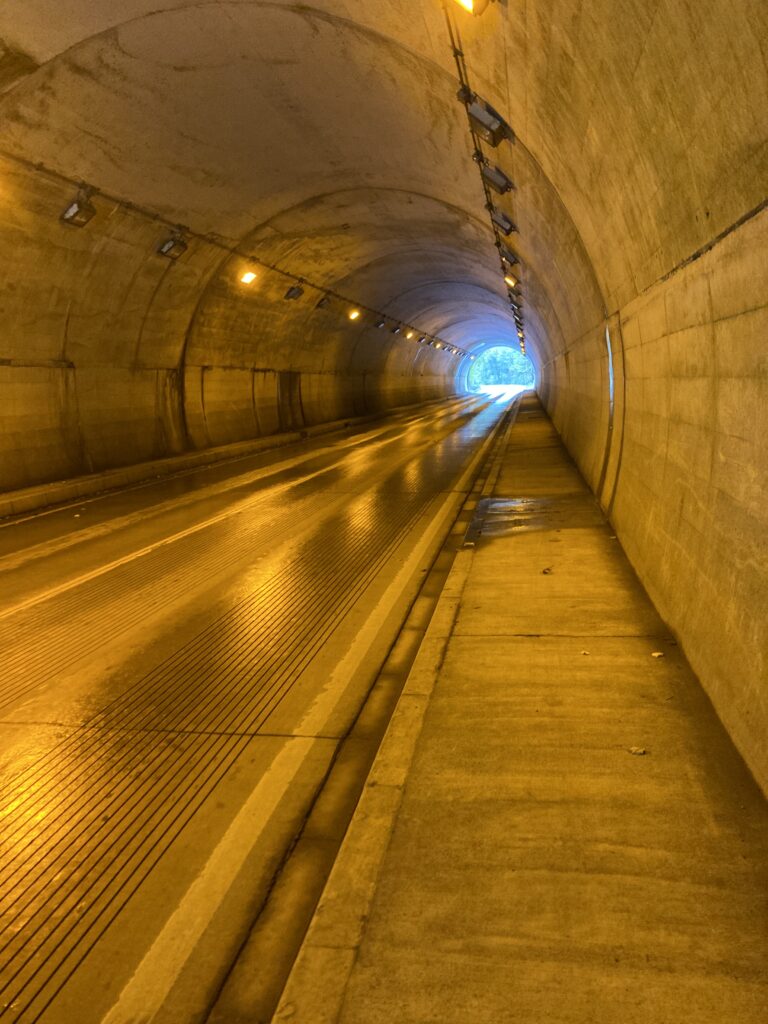rabbits


There’s this collection of Hot Wheels-style tracks and cars at a place in northern California. The owners can’t quite decide on a name. The guide calls it ‘Race Town’ and I’ve seen everything from ‘Carville’ to ‘A Place for Speed.’ Some ideas work better than others. This time around, the sign says ‘Live Free or Die-Cast’ and it’s difficult for me to tell whether that’s the new name or just a motto they’re throwing around.
The inside is the same every time.
A thousand cars. A thousand, thousand miles of flexible orange roadway. The whir of those spinning foam boosters that propel inanimate cars along their tracks. A distant smell of candy from the gift shop. The trouble with this car place is a well-meaning gimmick- an AI that analyzes reported traffic patterns from the city nearby and changes up the placement and speed of cars based on its understanding. It’s not real life, exactly, but it’s a sort of symbolic representation.
And every time I’m stopped by, it’s been gridlock traffic.
-traveler

I’m not used to the traditional National Park Services anymore, that much is clear. It’s made clear by the oppositional vibes of the people around me, the families pulling their children just a little closer- maybe not even realizing they’re doing it. I step into the restroom and look at myself in the mirror and see I’m much as I have been. I try to make myself objective, try to remember a way I looked before the way I look now. I’ve certainly been neglecting my beard and my clothes are in tatters but they are clean and I am clean. That’s the one promise I made myself, leaving for this trip.
That I wouldn’t let myself stink.
‘What is this? A common National Park Site in this, a normally non-normal guide to America’s roadside attractions?
It’s true, and it’s not the only one. There are gray areas when it comes to the Wayside and whole sections of this book are devoted to the complexities of understanding them. This, though, ‘The Glass Anthill,’ isn’t so gray as all of that. It just so happens that the National Parks set up shop next to the Wayside and, in doing so, became an extension of the long road we champion in this publication.
Pay the fee for ‘The South Nevada Fossil Beds’ but ignore the old bones- they’re just like all the others you’ve seen. Turn your attention, instead, to the corner in the southeast. There, you’ll find ‘The Glass Anthill.’’
What the guide neglects to mention is that ‘The South Nevada Fossil Beds’ is mostly subterranean. There is a welcome counter on the surface and a few rooms for glancing at fossilized specimens and watching a looping documentary about the site’s discovery that feels much longer than its 20-minute runtime. The man at the front welcomes me and guesses right away that I’m here for the anthill- this is the first indication that my appearance is giving away more than I know.
“Our manager has put a screen on the glass,” he says, “And you’re not supposed to pull it back because it might disturb the ants.” The man looks over his shoulder. “Just be quick about it if you do.”
When the man hands me my change I note several small ants tattooed on his knuckles and wonder if I shouldn’t have done a deep dive regarding potential cults or ant-based secret societies. Too late now, but I pointedly spend several minutes glancing over the displays and watching the slog of a video in the viewing room before descending the grated metal steps that lead to the wider display.
‘The South Nevada Fossil Beds’ distinguish themselves by this viewing area where the fossils can be seen in the undisturbed earth and among the various rock and mineral layers that several geologists insist are very important to their formation and really very interesting overall. It’s the sort of thing a normal person can look at for about a minute before the novelty wears off and, considering this location doesn’t even have a gift shop, I imagine somebody at the National Park Service agrees with me. This place isn’t making any best-of lists.
I do my lap around the main attraction before doing a 360 and realizing I have no sense for the cardinal directions underground (or ever, really, even on the surface). I pull up an app on my phone that points me toward a cardboard standee of a poorly designed fossil mascot, enthusiastically reminding children not to take fossils from public land. The ‘screen’ on either side of the mascot is a vaguely translucent pattern of dinosaurs marching about a prehistoric wasteland, most likely intended for windows in children’s rooms.
Most of my fellow visitors are busy on the other side of the exhibit and seem to be ignoring me anyway, so I make my way over to the standee and, rather than push behind it, which seems infinitely more suspicious, I confidently pick it up and move it to the side and start the arduous process of pulling up the corner of the fossil film with the fingernails I’ve kept chewed down to skin for as long as I’ve been alive. After only a moment, I notice that the whole wall seems to be moving behind the screen and I take a step back, some instinct for danger or disgust suddenly taking control. I press my hand to the screen and am reassured by the smoothness of glass behind it and, when I finally can peel it back, I find the massive ant kingdom the guide suggested would be there.
It’s bigger than I expected and somehow clearer than I expected too. I trace the paths of the ants to little chambers and, without any more knowledge than anyone else who was once a boy child in a world with ants, I am able to understand what those chambers are for. I see a resting chamber. An eating area. A place for burying the dead. I follow grander dirt paths to where the queen is birthing eggs and I follow those same paths back to where the eggs are being nurtured to maturity.
The longer I look, the more I see things that simply can’t be true. One chamber looks like a little ant gym. Another holds a vacant pavilion, maybe and empty theatre? Far off in the distance there are smaller chambers with insects that aren’t ants at all and I wonder if it’s a prison or a zoo.
My attention is so focused at this point that I don’t notice a child at my side before they shout back to their friends or siblings:
“Come check out what the weird guy found!”
Before I can put a word in, there are several more kids around me and they have toppled the standee and begin to tear at the plastic screen. To reveal depressing ant suburbs and long tunnels that must lead to other ant cities. I put enough space between myself and the chaos that, by the time parents and employees of the site arrive, nobody remembers it was me who started this.
That is, until I notice an ant on the floor, seeming to consider me to whatever extent its tiny senses can comprehend a behemoth. The ant seems curious, at first, and then accusing and, as it turns to move back toward whatever crack in the wall must allow them to walk freely in the exhibit, I step on it and leave. I don’t know what hell the ants can bring down on me, but I don’t need it today.
-traveler

‘Wayside destinations, by and large, keep to the interstates and outskirts of places where more normal life tends to occur, but there are certain points of interest that thrive in the cities as well and that is the case for ‘The Missing Piece,’ a store located and prominently advertised in Dallas proper. Listed separately as a ‘boardgame’ and ‘toy’ store, the owner, Patricia Sorgen, tends to disappoint potential customers and then leverage that disappointment to wow them. She does stock pieces that, taken in total, likely add up to thousands of boardgames and toys. Individually, though, these pieces are not much to look at.
To be inside ‘The Missing Piece’ is to be inside one of those old library card catalogs. It is roughly the size and shape of a studio apartment but it is chock full of shelves and each shelf has a series of little drawers with cryptic labels that mean something only to Sorgen. Sorgen herself greets customers and, after explaining that, no, she doesn’t sell whole toys or boardgames, usually performs a medium-like trick in which she guides visitors to a game or puzzle or favorite action figure of their past and asks them to describe when and where a piece of that item went missing. Often with very little to go on, Sorgen is then able to produce that piece from one of her drawers and, though the actual toy or boardgame may be long gone, the visitor tend to pay for it, just as a souvenir, and that is how Sorgen makes her money.
As to how she manages to keep such an inventory, well, that’s up to some debate.’
Sorgen is thin- her hair straight and white and her clothes simple but carefully ironed. She navigates the shelves with a precision that must come from decades of this work. She opens a small drawer in the back and it rattles, plastic on wood. She withdraws something small and returns.
“Was it this one?” She asks. It’s not really a question. She knows that it is.
Sorgen places, in my hand, the small green projectile I described as having lost on a road trip with my parents. It is rounded and translucent, meant to be a sorcerous fireball launched from the hand of an old wizard robot I owned when I was seven. The fireball was lost between dinner and dessert at a restaurant and then, because we still needed to get to the hotel, there wasn’t much time to look for it. I’ve thought a lot about this fireball over the years.
And it is the same fireball. I turn it over in my palm and run my finger over the divots my sister left there, briefly chewing it before the plastic was snatched away from her.
“Do you… take these things?” I ask.
Sorgen smiles. “Of course not. That would be a very difficult way to make money.”
Money is not the only thing that is traded on the Wayside- I’ve learned that much between then and now. I wonder if Sorgen isn’t some sort of emotional vampire or some demon that thrives on the fulfilment of old debts. She is visibly upset when I hand it back to her.
“I think it was a different color.” I tell her. “But thanks for checking.”
I suppose it will sit in the back of my mind a while longer, that little piece of plastic. And I’ll always know where to get it when I’m ready to pay the price.
-traveler

‘People like animals. People like videos of drowsy and sleepy animals. People must like sleepy animals.
This seems to be the entire logical skeleton of ‘The Sleepy Animal Zoo’ outside of Philadelphia, where several dozen vaguely exotic animals doze in their cages during the daytime, attempting to ignore the gawking patrons and their unruly children in order to catch a few moments of shut eye. ‘The Sleepy Animal Zoo’ is a private affair which means that it’s not subject to some of the same regulations one might take for granted, having seen what Pennsylvania’s public options have to offer.
Tickets are very cheap, which is good, yes, but they are so cheap that patrons can’t help but wonder where the money comes to maintain the animals’ habitats and, upon seeing them, understand that the money simply doesn’t exist. ‘The Zoo’ hasn’t aged well in the decade or so that it has been in operation and the bones were never exactly good. Visitors are left with the sense that the bears and the tiger could likely escape and maul everyone nearby if they were so tired. But they are tired and that is its own concern.
The animals are less dozy, really, than nearly unconscious. They rarely wake and when they do they seem to hardly be able to lift their heads. Then, there was the case of little Davey Maker who, like so many children before him, decided to crawl into the monkey habitat and, rather than be adopted or consumed by angry, frightened monkeys, simply fell asleep on the hot cement and dreamt until zookeepers came to fetch him.
There is an amount of cuteness, here. That can’t be denied. The animals appear well fed and none perform the manic pacing that is sometimes noted in creatures brought to the very edge of insanity by the cage. At its worst, ‘The Sleepy Animal Zoo’ probably has its animals on a constant cocktail of sedatives that keeps them cozy and docile. At its best, ‘The Zoo’ is kind of boring and, as many visitor reviews indicate ‘not that different from any other zoo.’
Rumor has it that the animals are kept awake at night by wild, private dance parties for celebrities and politicians, these gatherings sometimes bordering on the occult. These are rumors, though, and one has to imagine that the entry price for admission to these ritualistic raves is so high that it would likely exclude anyone reading this book.’
-an excerpt, Autumn by the Wayside
© 2024 · Dylan Bach // Sun Logo - Jessica Hayworth